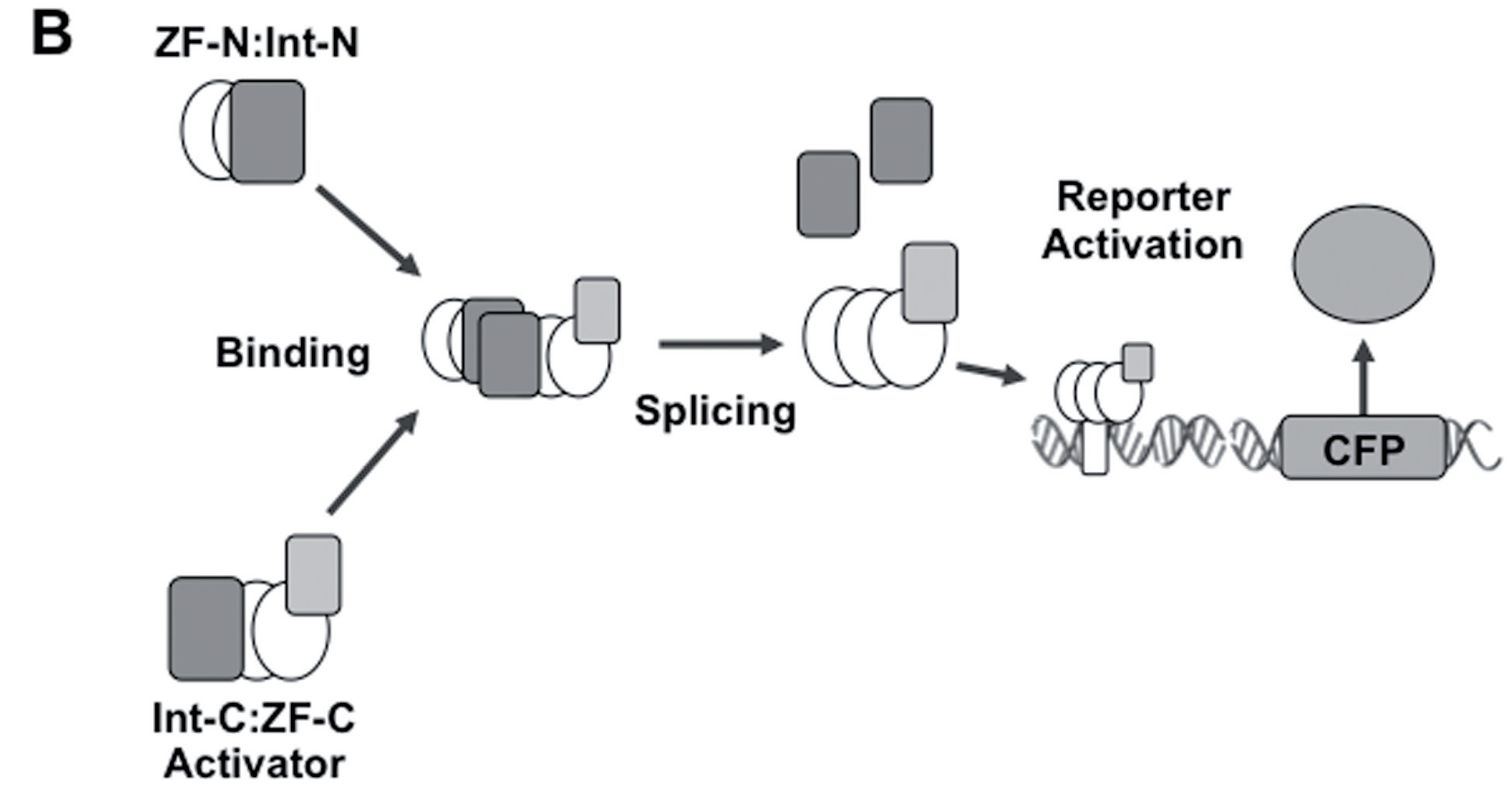Part:BBa_K2549038
CfaC-ZF21.16C-NLS
This part is one of the downstream elements of our amplifier. It was constructed by fusing CfaC (Part:BBa_K2549010), ZF21.16C (Part:BBa_K2549012) and NLS (Part:BBa_K2549054), from N terminal to C terminal. CfaC is the C-terminal fragment of Cfa which is a consensus sequence from an alignment of 73 naturally occurring DnaE inteins that are predicted to have fast splicing rates. ZF21.16C is the C-terminal fragment of the zinc finger whose recognition helices for three-finger arrays are substituted by the reported synthetic zinc finger 21.16 residues on the basis of the BCR_ABL-1 artificial zinc finger[1]. NLS is a short nuclear location sequence from SV40 large T antigen. When coexpressed with VP64-ZF21.16N-CfaN (Part:BBa_K2549036) in the same cell, both fusions will be produced and a transcription activating function will be executed. Also, when coexpressed with KRAB-ZF21.16N-CfaN (Part:BBa_K2549037) in the same cell, both fusions will be produced formed and a transcription repressing function will be executed.
Sequence and Features
- 10COMPATIBLE WITH RFC[10]
- 12COMPATIBLE WITH RFC[12]
- 21COMPATIBLE WITH RFC[21]
- 23COMPATIBLE WITH RFC[23]
- 25COMPATIBLE WITH RFC[25]
- 1000INCOMPATIBLE WITH RFC[1000]Illegal BsaI site found at 91
Illegal SapI.rc site found at 21
Biology
Boolean logic gates via split zinc finger-based transcription factors
Lohmueller JJ et al have demonstrated the split ZF-TF reconstitution process. Please note that we used Cfa split intein (Part:BBa_K2549009 and Part:BBa_K2549010) but not dnaB reported below.


Characterization
It works as we designed.

These results were obtained using flow cytometry. As for the AND gate, when coexpressed with VP64-ZF21.16N-CfaN, the expression level of d2EGFP is relatively turned up compared to circumstances that they're not coexpressed. While for the NAND gate, when coexpressed with KRAB-ZF21.16N-CfaN, the expression of d2EGFP is relatively repressed.
References
- ↑ A tunable zinc finger-based framework for Boolean logic computation in mammalian cells. Lohmueller JJ, Armel TZ, Silver PA. Nucleic Acids Res, 2012 Jun;40(11):5180-7 PMID: 22323524; DOI: 10.1093/nar/gks142
//proteindomain/internal/special
//proteindomain/localization
| None |

